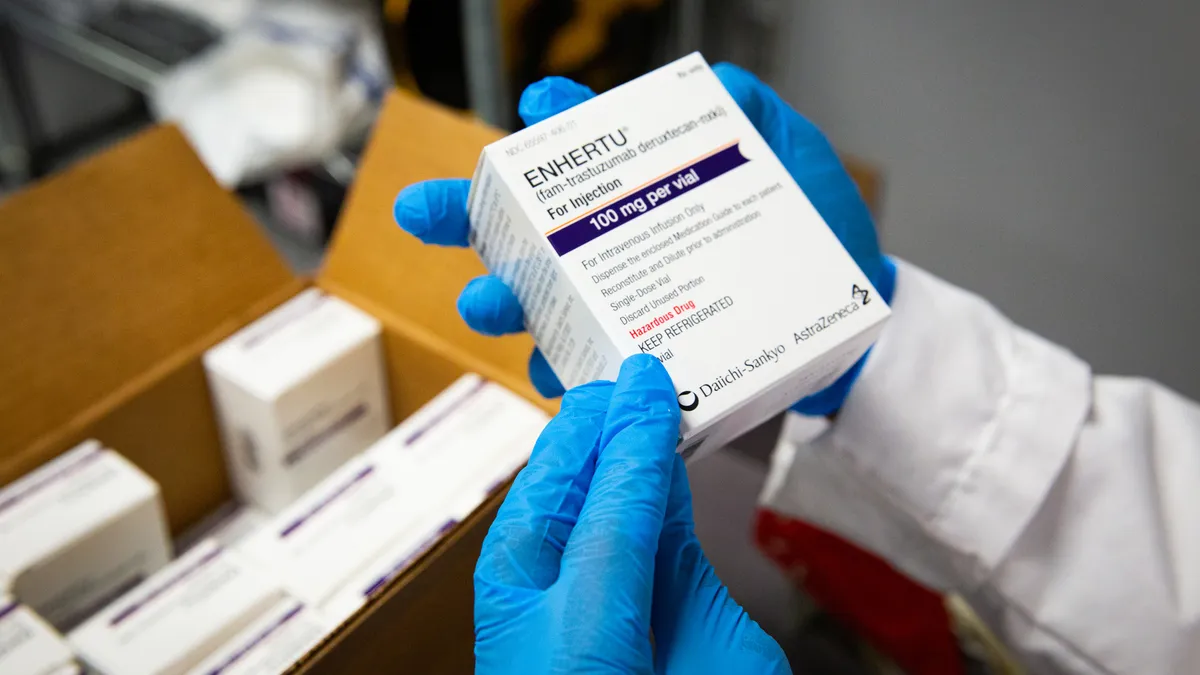 The new world of B2B marketing is now shaped by data-driven decision-making by way of artificial intelligence (AI) and buyer-intent data. These two technologies allow for better understanding of what your customers want and can help you discover hidden business opportunities in near “real time." When combined with account-based marketing (ABM), they’ve helped B2B marketing and sales become more efficient with their time, effort, and budget, all while increasing revenue.
The new world of B2B marketing is now shaped by data-driven decision-making by way of artificial intelligence (AI) and buyer-intent data. These two technologies allow for better understanding of what your customers want and can help you discover hidden business opportunities in near “real time." When combined with account-based marketing (ABM), they’ve helped B2B marketing and sales become more efficient with their time, effort, and budget, all while increasing revenue.
What’s Buyer-Intent Data?
Buyer-intent data is a type of marketing data that can reveal people’s interests from their internet browsing behavior within the B2B world of content. There are two types of buyer-intent data: first party and third party. For this piece, I’ll focus primarily on third-party B2B intent data, but first, let’s understand the difference between them.
First-party intent data is data you own that originates from marketing automation platforms, customer relationship management (CRM) platforms, webinar platforms, ad tech data, web analytics, past purchase history, etc. This information can be used to build a profile about a person or account based on their interests and preferences. It does not include anything pulled from outside of your website. The most important requirement with first-party data is whether that data is aggregated into a customer data platform (CDP) so that insights are automatically derived through AI and machine learning.
Third-party B2B buyer-intent data (buyer-intent data for short) is sourced from publisher co-ops (usually publisher websites) and bidstream data (derived from demand-side ad platforms) to find out what businesses and their employees are searching for and consuming. Buyer-intent data providers utilize AI, deep learning, and natural language processing to contextualize content consumed by companies, so more content is strategically created in tandem with related activity to generate more “intent signals."
Intent signals are what marketers and sales look for. For example, when a healthcare practitioner attends a webinar about, for instance, multiple myeloma, obviously they’re interested in the subject. If that same person and several of their coworkers (this is called a buying committee) attend that webinar, download peer-reviewed research, view article figures on B-cell maturation antigen, and/or read articles on the same topic across the internet, it’s likely their hospital may have a high intent for your pharma brand in that space.
To increase the chances of discovering intent signals, buyer-intent data providers collect data from thousands of sources. Consumers of this data, typically those in B2B or sales, automate detection of content consumption patterns using ABM platforms to identify specific behaviors marketers can act on.
For example, if doctors within hospitals are demonstrating “in-market" behavior for a specific pharmaceutical drug or indication, you can automate the deployment of account-based ads to them because they’ve been doing research in that space.
Combining Buyer-Intent Data With ABM
ABM is the new standard in B2B go-to-market strategy. Scalable ABM is enabled through specialized platforms that identify companies through IP addresses, AI, and a variety of data sources to increase accuracy and keep account information updated.
These platforms help marketing and sales join forces across a list of strategic target accounts. But the question remains: how do you know which accounts are worth your time, effort, and resources? This is when you can use buyer-intent data to help identify and prioritize accounts for your ABM program. It’s important to note that buyer-intent data helps you understand a buyer’s intent; however, it is not directly related to “intent to buy" (an expressed purchasing commitment).
How Can Buyer-Intent Data Help You Find the Right Accounts?
First, determine which segment (product, service, solution, geography) to prioritize. Second, list the problems your customers experience, what content they would consume, which websites they regularly visit, and which search terms they’re likely to use. Third, create a list of ideal accounts (these can be current customers or accounts you’d like to have). After gathering this information, these inputs can be used in an ABM platform that combines first-party and third-party buyer-intent data, which helps inform the ABM program. An ideal marketing technology setup would have the necessary integrations in place, such as a CRM and marketing automation platform connected to an ABM platform.
When and How Should You Use Buyer-Intent Data?
Buyer-intent data should be leveraged at every stage of an ABM program, from strategy to content creation, and from tactical execution to measuring effectiveness for optimization. Also, it’s best practice for marketers to collaborate and share key insights with sales and account managers. For sales, they can monitor their target account list to determine which accounts to focus on after the ABM campaign is launched. For account managers, buyer-intent data can be used to monitor an account’s potential needs or to look for signs that customers are researching competitors.
Transforming Your Go-To-Market Strategy and Execution Through Pilots
If you’re in a business that …
Frequently experiments with new technologies
Has a mature marketing technology stack with necessary integrations
Regularly tries new methods of going to market…
… then launching your first ABM campaign utilizing buyer-intent data should be much easier because you’re taking advantage of automation throughout your customer’s journey, reporting, and marketing/sales operations. And if all your data is stored in a CDP or a data lake, you’re well ahead of the game! Scoping a pilot, executing, and operating will likely be much easier.
However, if you’re in a business that has a more conservative work culture, I recommend assembling a team of “willing adventurers" with the aid of a forward-thinking executive sponsor to provide support for piloting.
The nature of a pilot is to facilitate a quality learning experience. To increase the chances of success, consider defining a goal that’s scaled to the team’s capabilities at both novice levels and marketing technology enablement (teams are leveraging fully integrated platforms and utilizing most platform features). For example, if your team is new to ABM and has a mature marketing technology stack (fully set-up platforms with necessary integrations) and leveraging automation, a goal could look like “Increase revenue X% with 10 existing accounts and acquire five net new accounts in nine months." However, if your marketing technology stack is less ideal, a goal could look like “Increase revenue X% with five existing accounts in nine months."
Recommendations for scoping a pilot may include:
Awareness and engagement journey stages. The focus is to generate as many unique visitors as possible from an account while not yet deanonymizing them. You’re building a buying committee and growing relationships by getting them familiar with your brand. You’ll want to earn their trust by providing ungated content like blog posts, on-demand webinars, video, etc. If you’re generating new contact information at these stages, it’s because your visitors want you to contact them
A conversion stage (deanonymizing visitors through web forms) becomes a priority when your engagement metrics provide proof. This is a good time to use high-value, tailored content or live webinars with thought leaders
Choosing one priority segment of one to 50 accounts in one country. Adding more accounts or locations can require more time, resources, and budget. Sales and marketing collaborate to determine this list
Utilize a combination of marketing channels and content. Here’s a list of what’s required for an ABM campaign: 1) Account-based ads (ABA) are served to target accounts by IP addresses and cookies. Buyer-intent data becomes the filter to serve ads to interested employees. ABAs are served through a purpose-built B2B ad network; 2) Landing pages and ungated content, for awareness and engagement journey stages to build relationships, familiarity with your brand, and value proposition; 3) Gated content for conversion stage only. What’s optional? Traditional retargeting ads based on cookies and emails
A pilot like this can take two to three months with a runtime of six to seven months, but this timeline can be extended should the desired results be achieved. Most of your time will be invested in analysis, content creation, and optimization
Content creation is aligned through buyer-intent insights and target account lists. In the early stages of forming an ABM program, this becomes an exercise in content personalization. We’re building this practice to get better as a team. Orchestration of deploying quality content across a variety of technologies, media, and platforms delivered in real time becomes the end game.
When launching your first ABM campaign, although it’s tempting to monitor the situation every day, reserve your judgment for at least four weeks so that proper analysis can be conducted (unless the metrics are way off). Biweekly reports are encouraged.
The campaign launch is just the beginning, and optimizing the campaign is an evolving process. In the first month’s analysis of the campaign, pay attention to account engagement across channels and site visits. With ABAs, observe account impressions, clicks, and visits. Be aware that not everyone clicks or taps on ads. They’ll search for your company name, website, and content about your company. This is also a good sign and website visits, surges in direct or organic site traffic (also detectable in web analytics), and buyer-intent surges will reflect in the ABM platform.
Finally, it’s important to note that ABM requires marketing and sales to work together. Post-campaign launch, someone in sales should be involved in regularly scheduled campaign meetings. When accounts achieve MQA status (marketing-qualified account), they’re very close to the conversion stage. Contacts generated in this stage can become leads (expressed intent to buy with semi-defined commitment, timeline, and funding). That’s when sales can take over (SQL aka sales-qualified lead). Sales should provide feedback on campaign effectiveness, and they should engage on social platforms now that accounts are engaging with your brand (sales-sourced leads). AI within ABM platforms tracks account progression throughout the customer journey and determines when accounts reach MQA status if the necessary integrations are present and the platform is set up correctly.
AI and buyer-intent data allow marketers and sales to expand on data-driven strategies and decision-making. These two technologies allow for better understanding of what your customers want and can help you discover opportunities in near real time. When combined with ABM, your B2B marketing and sales teams will become more efficient with their time, effort, and budget, and this will lead to increased revenue. These technologies are relatively young within the larger umbrella of digital marketing and digital sales, but their true potential is just emerging. One thing is for certain, using these tools significantly reduces guesswork.(PV)
Ogilvy Health is a global network that delivers insight, creativity, and innovation to drive growth and impact for our clients’ brands.
For more information, visit ogilvyhealth.com.


















